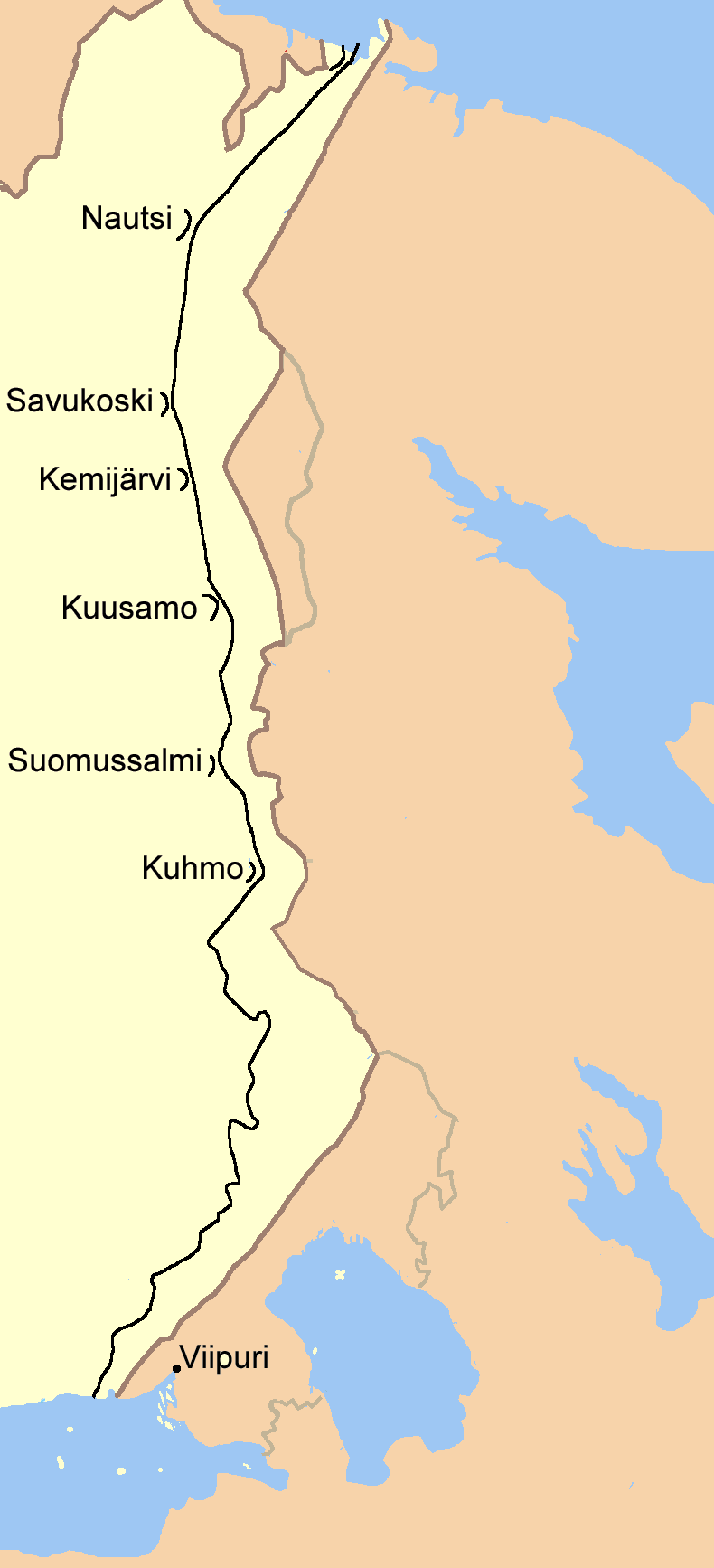|
VKT-line
The VKT-line or Viipuri–Kuparsaari–Taipale line (, ) was a Finnish defensive line.Leskinen, Jari; Juutilainen, Antti (ed.): The Little Giant of the Continuation War, pp. 220, 223, 349, 803, 804, 806, 980, 981. Porvoo: WS Bookwell, 2007. ISBN 978-951-02869-0-6. See also * VT-line * Karelian Fortified Region * Salpa Line References Continuation War World War II defensive lines {{WWII-stub ... [...More Info...] [...Related Items...] OR: [Wikipedia] [Google] [Baidu] |
VT-line
The Vammelsuu–Taipale line (; ; ) was a Finnish defensive line on the Karelian Isthmus built in 1942–1944 during the Continuation War and running from Vammelsuu on the northern shore of the Gulf of Finland through Kuuterselkä and Kivennapa and along Taipaleenjoki to Taipale on the western shore of Lake Ladoga. It crossed the Saint Petersburg–Vyborg railroad at Sahakylä (now 63rd km) and the Saint Petersburg–Hiitola railroad at Kelliö (now 69th km). The VT-line was part of four main defence lines constructed by Finland in the aftermath of the Winter War, with the VT-line being the second main line of defence. On June 15, the partially completed VT-line was breached at Kuuterselkä by the Soviet 21st Army as part of the Vyborg–Petrozavodsk Offensive The Vyborg–Petrozavodsk offensive or Karelian offensive was a strategic operation by the Soviet Leningrad and Karelian Fronts against Finland on the Karelian Isthmus and East Karelia fronts of the Continua ... [...More Info...] [...Related Items...] OR: [Wikipedia] [Google] [Baidu] |
Salpa Line
The Salpa Line (, literally ''Latch line''; ), or its official name, Suomen Salpa (''Finland's Latch''), is a bunker line on the eastern border of Finland. It was built in 1940–1941 during the Interim Peace between the Winter War and the Continuation War and further in 1944 to defend Finland against a possible Soviet invasion. The line is 1,200 kilometres long, stretching from the Gulf of Finland to Petsamo (now Pechenga, Russia). It never saw military action because the Soviet offensive in 1944 was stopped at the VKT-line on the Karelian Isthmus. The fortifications of the Salpa Line were significantly more complete and stronger than those of the Mannerheim Line.Reino Arimo, ''Suomen linnoittamisen historia 1918—1944'' (''The History of Finnish Fortification 1918—1944''), Otava, 1981, Construction The planning of the Salpa Line was commissioned by general Rudolf Walden and the construction began at the end of the Winter War in 1940. At first, volunteers worked there� ... [...More Info...] [...Related Items...] OR: [Wikipedia] [Google] [Baidu] |
Continuation War
The Continuation War, also known as the Second Soviet–Finnish War, was a conflict fought by Finland and Nazi Germany against the Soviet Union during World War II. It began with a Finnish declaration of war on 25 June 1941 and ended on 19 September 1944 with the Moscow Armistice. The Soviet Union and Finland had previously fought the Winter War from 1939 to 1940, which ended with the Soviet failure to conquer Finland and the Moscow Peace Treaty. Numerous reasons have been proposed for the Finnish decision to invade, with regaining territory lost during the Winter War regarded as the most common. Other justifications for the conflict include Finnish President Risto Ryti's vision of a Greater Finland and Commander-in-Chief Carl Gustaf Emil Mannerheim's desire to annex East Karelia. The following paragraph contains a bundle of cites for the Finnish participation in the siege of Leningrad, which is a commonly debated complex issue in the article (see talk).--> On 22 June 1941 ... [...More Info...] [...Related Items...] OR: [Wikipedia] [Google] [Baidu] |
Finland
Finland, officially the Republic of Finland, is a Nordic country in Northern Europe. It borders Sweden to the northwest, Norway to the north, and Russia to the east, with the Gulf of Bothnia to the west and the Gulf of Finland to the south, opposite Estonia. Finland has a population of 5.6 million. Its capital and largest city is Helsinki. The majority of the population are Finns, ethnic Finns. The official languages are Finnish language, Finnish and Swedish language, Swedish; 84.1 percent of the population speak the first as their mother tongue and 5.1 percent the latter. Finland's climate varies from humid continental climate, humid continental in the south to boreal climate, boreal in the north. The land cover is predominantly boreal forest biome, with List of lakes of Finland, more than 180,000 recorded lakes. Finland was first settled around 9000 BC after the Last Glacial Period, last Ice Age. During the Stone Age, various cultures emerged, distinguished by differen ... [...More Info...] [...Related Items...] OR: [Wikipedia] [Google] [Baidu] |
Karelian Fortified Region
The 22nd Karelian Fortified Region (KaUR; ) is a 60 km wide Soviet defensive fortified district to the north of Leningrad (now Saint Petersburg) that was built in 1928–1932, 1938–1939, 1941–1944 and 1950–1965 in the Soviet part of the Karelian Isthmus amongst other fortified areas (including the Stalin Line) constructed around that time in order to defend the western borders of the Soviet Union. The KaUR spans the old Finno-Russian border from Valkeasaari near the northern shore of the Gulf of Finland through Lempaala to Nizhniye Nikulyasy Bay on the western shore of Lake Ladoga. The 42nd Rifle Division was formed from individual infantry and construction battalions within the Region on 17 January 1940. Its commander in 1941 was General Major Mikhail Andrianovich Popov. Among Soviet definitions of Fortified Regions were: *Fortified Region as a fortified area, equipped in engineering terms for defence, line of defense in the form of long-term centers of resis ... [...More Info...] [...Related Items...] OR: [Wikipedia] [Google] [Baidu] |


